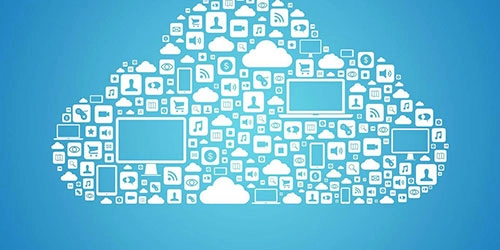Can My Sage 100 (MAS 90/200) Live in the Cloud? Should It?

You would have to have been quarantining for longer than a year to not have noticed the popularity of Cloud applications and SaaS (software as a service). In fact, 63% of companies are now using cloud-based ERP applications. Companies are discovering that when they move their important applications to the cloud, capital expenditures on infrastructure are lowered, security is heightened and their IT staffs can focus on high-value activities. While Sage 100 is not a true SaaS application like Sage Intacct, companies using Sage 100 can take advantage of many of the benefits of cloud applications by moving to a Hosted ERP model. Should you make the move to the cloud?
The Difference Between Hosted ERP and Cloud ERP
The terms Hosted ERP and Cloud ERP are often used interchangeably. While both Hosted ERP and Cloud ERP can be accessed remotely, there are definite distinctions between the two. What’s the difference?
Hosted ERP is a web-enabled ERP software solution. Your company purchases or subscribes to software, but instead of it being installed in house (on premise), the software is installed on a remote server provided by a hosting company or Cloud Services Provider (CSP). The configuration allows authorized users within your company to access the application over an internet connection.
Hosted ERP applications are single tenant, meaning your company’s licensed copy of Sage 100 is installed on the remote server for your use only. This means that any time Sage publishes a new release or update, that change will not automatically impact your instance of the software. Instead, it will need to be installed. You are probably very familiar with the Sage 100 upgrade process when a new patch, product update, or version is released that you need to have on your system.
Cloud ERP applications, like Sage Intacct, are multi-tenant. Simply put, multi-tenant means that there is one instance of the Cloud ERP installed on the CSP’s computers and that one instance serves multiple subscribers, or tenants. When Sage makes a change to the Sage Intacct software, all subscribers are automatically updated and see the same change. A client or partner no longer needs to install an upgrade. Cloud ERP applications fall under the SaaS (Software as a Service) umbrella term.
How Does Hosted ERP work?
Both Hosted ERP and Cloud ERP rely on a CSP or hosting provider — the company that provides the technology infrastructure (Think AWS, Azure, Google). With a hosted ERP, however, there are usually some additional players. You won’t get very far calling one of these behemoths up and asking them to host your ERP. Instead, you will go through a few intermediaries such as your managed services provider (MSP), MicroAccounting, or perhaps even a second tier CSP.
You could also consider skipping the public cloud and engaging with a private cloud hosting service. These services cut out the need for some of the intermediaries — but not all of them. Sage has recently introduced a program that promises to help Sage 100 users migrate to a hosted ERP deployment. The program is called Sage Partner Cloud. We are working closely with Sage on this new offering and will share more with you as the rollout continues.
So yes, your Sage 100 can be hosted in the cloud. Whether it should be moved to the cloud is something to carefully weigh — and we can help you do that. Contact one of our client advisors to learn more about your options.




